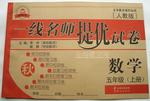题目内容
in a story book, the girl didn’t notice the stranger
- A.Burying
- B.Buried
- C.To bury
- D.Having buried
试题分析:考查过去分词做状语:句意:埋头看一本故事书,女孩没有注意到陌生人。Be buried in是“埋头于”,可以用过去分词做状语,相当于:because she was buried in..,选B。
考点:考查过去分词做状语

 一线名师提优试卷系列答案
一线名师提优试卷系列答案On April 24th, another natural disaster—the oil spill(泄露) in the Gulf of Mexico, happened. Millions of dollars have been used to help stop the spill and to clean up the animals, beaches, and land spoiled by the oil.Unfortunately, when many of these chemicals are used, more damage is caused to the environment, especially to lives in the sea.
But governments seem to accept the risk of transporting millions of tons of oil by ship every day so that we can fill up our cars and drive around and cause even more environmental damage.Interestingly, the biggest companies in the world produce cars, and the next biggest supply the gasoline to make them run.
Of all of today’s environmental disasters, an oil spill may actually be one of the least serious.Although oil is poisonous, it is a natural material.In the end, it breaks down naturally.In 1967 the tanker Torrey Canyon sank off the Scilly Isles near the coast of England and spilled 120,000 tones of oil into the ocean.If you go there today, you will find it hard to see any sign that it ever happened.
However, we should be thinking more about reducing our dependency on oil.Governments should be encouraging research into new technologies, such as cars run by solar power(太阳能), electricity, hydrogen, and so on.Much of this research, in the past, was stopped by the oil, gas, and coal.
If the world’s millions of cars were 10% more efficient(高效的),we would need many fewer tankers crossing the oceans each year.If this happened, the risks of oil spills would be reduced, and the air we breathe would be cleaner and fresher, too.
【小题1】What is the passage mainly talking about?
| A.Oil spills pollution. | B.What oil pollution is. |
| C.Oil tanker accidents. | D.How to reduce oil pollution. |
| A.By giving a description. | B.By making an argument. |
| C.By giving an example. | D.By drawing a diagram(图表). |
| A.Transportation depending more on oil. |
| B.Poisonous oil breaking down naturally. |
| C.Millions of tons of oil spilling into the sea. |
| D.More environmental damage being caused. |
| A.We should build safer tankers in the near future. |
| B.We should develop new technologies to cut oil use. |
| C.Tankers should not be allowed to sail near the coastlines. |
| D.Countries should build more oil pipelines under the sea. |
| A.In a story book. |
| B.In a science magazine. |
| C.In a novel. |
| D.In a brochure. |
The True Story of Treasure Island
It was always thought that Treasure Island was the product of Robert Louis Stevenson’s imagination. _26_,recent research has found the true story of this exciting work.
Stevenson, a Scotsman, had lived 27 for many years in 1881 he returned to Scotland for a 28 . With him were his American wife Fanny and his son 29 .
Each morning Stevenson would take them out for a long 30 over the hills. They had been 31 this for several days before the weather suddenly took a turn for the worse, Kept indoors by the heavy rain. Lloyd felt the days 32 . To keep the boy happy Robert asked the boy to do some 33 .
One morning, the boy came to Robert with a beautiful map of an island. Robert 34 that the boy had drawn a large cross in the middle of 35 . “What’s that?” he asked “That’s the 36 treasure “said the boy Robert suddenly 37 something of an adventure story in the boy’s 38 While the rain was pouring, Robert sat down by the fire to write a story. He would make the 39 a twelve-year-old boy just like Lloyd. But who would he the pirate(海盗)?
Robert had a good friend named Henley, who walked around with the 40 of a wooden leg. Robert had always wanted to 41 such a man in a story 42 Long John Silver the pirate with a wooden leg, was 43 .
So thanks to a 44 .September in Scotland a friend with a wooden leg and the imagination of a twelve-year-old boy we have one of the greatest 45 stories in the English language.
|
1. |
|
|
2. |
|
|
3. |
|
|
4. |
|
|
5. |
|
|
6. |
|
|
7. |
|
|
8. |
|
|
9. |
|
|
10. |
|
|
11. |
|
|
12. |
|
|
13. |
|
|
14. |
|
|
15. |
|
|
16. |
|
|
17. |
|
|
18. |
|
|
19. |
|
|
20. |
|